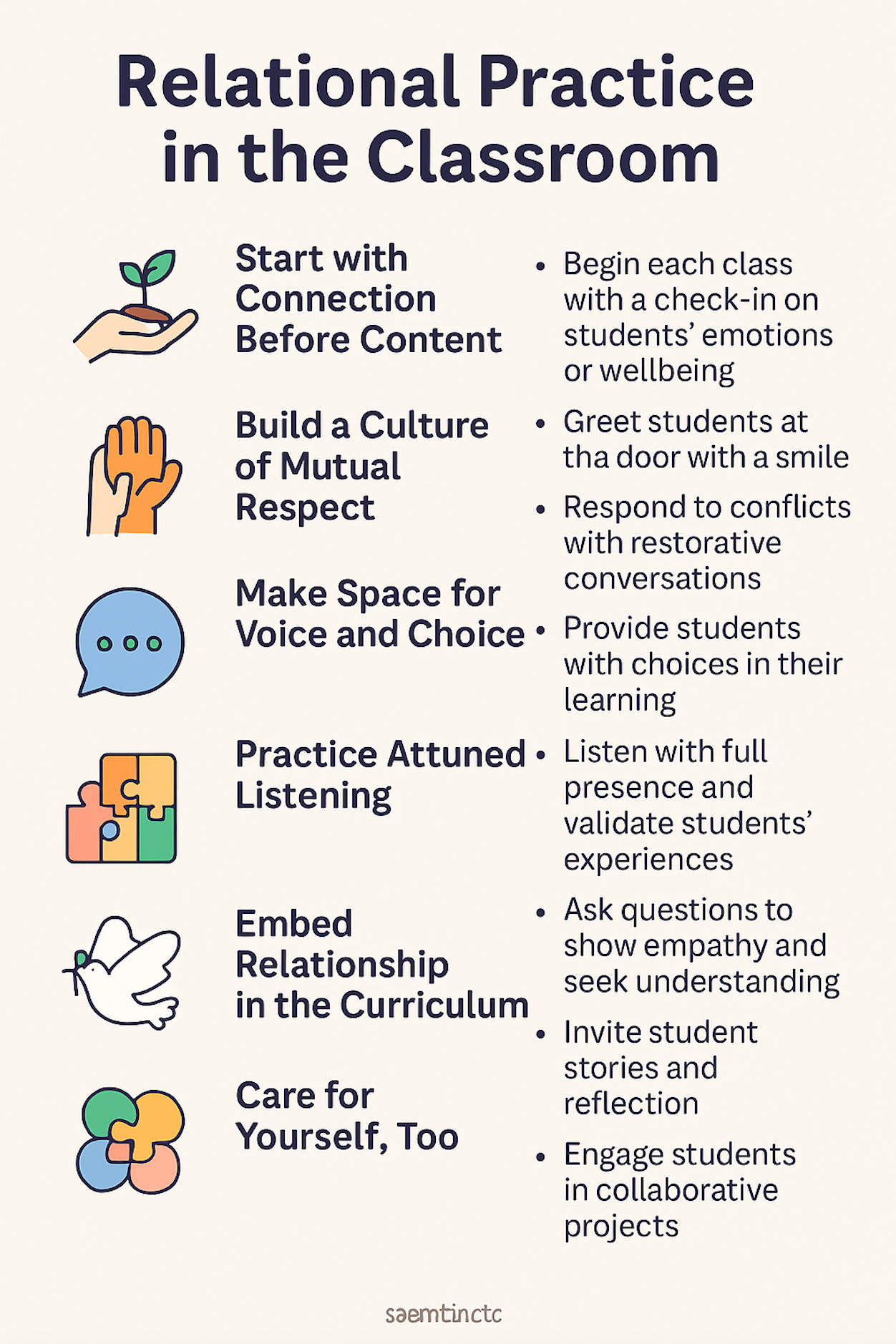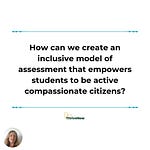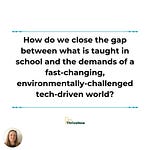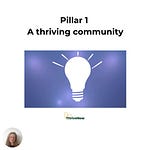In a previous post, we explored a fundamental question: Do parents have to choose between academic excellence and wellbeing? We highlighted pioneering primary schools like Educare Small School, Lumiar School, and The New School UK —that prioritise a balanced education, equipping children with knowledge, skills, and values.
These schools are proving that outstanding, learner-centred education can be delivered at the same per-student cost as mainstream schools. They all have strong values-led leaders who embed relational holistic pedagogy at their core. While The New School UK serves both primary and secondary students, such comprehensive approaches remain rare, particularly at the secondary level.
What happens when most students move to secondary education? Why does it generally become so much harder to sustain this holistic approach, and why does mainstream secondary education often feel so 'compliance' based?
The Impact of compliance-based systems
Current secondary school structures often prioritise compliance over relational practice, leading to disengagement and negative experiences for students and teachers alike.
"I've been teaching for fifteen years, and the system has become increasingly rigid," shares Jane, a secondary science teacher from Bristol. "When students need to ask for permission to sharpen a pencil or face detention for helping a classmate, we're not creating an environment where learning can flourish."
This tension creates an oppositional environment, making it harder to foster trust, curiosity, and deep learning. Most educators enter the profession because they love working with young people, yet they are trapped in a system that forces them to prioritise curriculum coverage over meaningful relationships.
ThriveNow's four-pillar approach to educational transformation
At ThriveNow, we're developing a comprehensive framework for educational reform based on four essential pillars:
An inclusive community – creating an equitable and diverse environment where every learner is supported.
Inquiry-led pedagogy – encouraging students to take ownership of their learning through curiosity-driven exploration.
A transdisciplinary curriculum – breaking down traditional subject silos to offer a connected and meaningful learning experience.
Formative assessment – moving beyond exams to assess learning in a way that reflects real-world competencies.
This post focuses on our second pillar: Inquiry-led pedagogy that prioritises relationships and student agency and is part 1 of two posts.
What is relational and restorative practice?
According to Portsmouth Education Partnership:
"Relational and restorative practice is an evidence-based way of being and doing that understands the quality of human experiences (individually and collectively) as directly correlating with positive experiences of making, maintaining and mending relationships." (PCC, 2024)
Why does this matter? Because students learn best when they feel safe, valued, and included. A relational approach isn't a 'nice to have'—it's fundamental to creating the best possible climate for learning.
From theory to practice: implementing relational approaches
Schools that successfully embed relational and restorative practice deliberately design it into their:
✔️ Cultures of learning and structures – how learning is organised
✔️ Policies – how students and teachers are supported
✔️ Procedures – how challenges and conflicts are handled
✔️ Everyday interactions – how relationships are built and sustained
Case study: Highfield Secondary School
Highfield Secondary, a comprehensive school in the North of England, has been implementing relational practices for three years, even within the constraints of the national curriculum.
Their approach includes:
Starting each day with a 20-minute circle time where students and teachers check in
Training all staff in restorative conversations rather than punitive disciplinary measures
Creating flexible learning spaces where students have more agency over how they work
The results have been significant, with a 42% reduction in behavioural incidents and improved GCSE results, demonstrating that wellbeing and academic achievement can go hand in hand.
Small steps for big change

Earlier this week, I attended a powerful course led by Rachel Musson and Holly Everett of ThoughtBox Education, called Triple Wellbeing®. On this day, we explored the deep interconnection between individual, community, and planetary wellbeing. One of the key takeaways was that real change in education begins with the teacher’s own wellbeing—because only from that grounded place can we meaningfully connect with our students as people, not just learners. From there, a culture of trust, inquiry, and shared agency becomes not only possible but essential. Triple Wellbeing reminded me that nurturing relationships in the classroom isn’t a soft add-on—it’s the foundation of any system that hopes to support true learning, growth, and care for the wider world.
So how can one get started? Rachel and Holly share many ways through their ThoughtBox website, which is a joyful place to explore. Otherwise, here are a few of our own…
🌱 1. Start with connection before content
Check-ins: Start each session with a simple but meaningful check-in to gauge students’ emotional and mental state—whether through a single word, a mood metaphor, or another brief prompt. These moments help build trust and attune the classroom to each individual’s needs.
Greeting at the door: A personal welcome—using names, eye contact, and genuine presence—can quietly affirm each student’s worth. Beginning with a sincere “How are you all today?” followed by active listening creates a tone of care and connection that carries into the lesson.
🤝 2. Build a culture of mutual respect
Collaborative agreements: Create class norms with students, not for them. This builds ownership and accountability. Be a ‘safe adult’ by being consistent and living by these agreements as a teacher and school as a whole.
Restorative conversations: When conflicts arise, lean into dialogue instead of punishment—asking questions and listening not just to what is being said, but the emotion/feeling behind the words.
🧠 3. Make space for voice and choice
Offer choices in assignments or learning pathways—giving students agency supports both motivation and trust. We ware sharing some webinars on this coming soon, so please do join us if you’d like inspiration and resources around this.
‘Talking/listening circles’ or community meetings: Regular opportunities for open dialogue (not just when there’s a problem) foster a sense of safety and shared experience.
💬 4. Practice attuned listening
Listen with full presence, even (especially) in busy moments. Reflect back what you hear, and validate students’ experiences, even when you can’t fix the issue.
Use “I notice…” or “I wonder…” language to invite understanding without judgment.
🧩 5. Embed relationship in the curriculum
Storytelling & reflection: Encourage students bring personal stories or lived experiences into their learning where appropriate.
Reaching out to parents/carers: Identify and share at least one moment of personal pride for each young person—highlighting who they are, not just what they do. Celebrate this with the student and their community.
🕊️ 6. Care for yourself, too (this really should be number 1!)
Relational practice starts with your own regulation and wellbeing. Modelling self-care, boundary-setting, and emotional honesty teaches through example.
Looking ahead
Compliance may keep the system ticking over, but it will never ignite the minds or hearts of young people, nor will it solve the global problems of today. If we want classrooms and communities where students thrive, not just survive, it’s time to trade control for connection, and shift from compliance to inquiry. That’s where real learning lives.
Next week, we'll continue exploring our second pillar with "How can we move from passive absorption to active exploration?" — examining how relational practice creates the foundation for effective inquiry-based approaches.
Get involved
At ThriveNow, we know how tough it is for teachers and school leaders to challenge these structures from within. That's why we're:
Launching a community of practice for educators implementing relational approaches
Developing resources that can be used within existing curriculum frameworks
Collecting case studies from schools making these changes
Subscribe to our Substack to receive updates on these initiatives, or share your own experiences of implementing relational practices in secondary settings.
And in the meantime, please do consider contributing to our GoFundMe page - this way we can continue to operate as an open source while we secure more funding. Or if you can help us fundraise, please do reach out.
With gratitude,
Kimberley and the ThriveNow team











Share this post